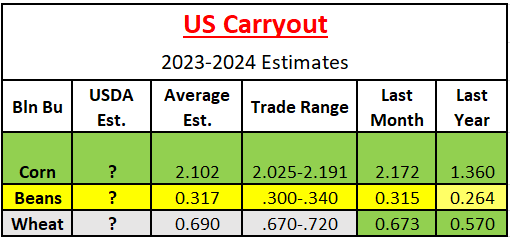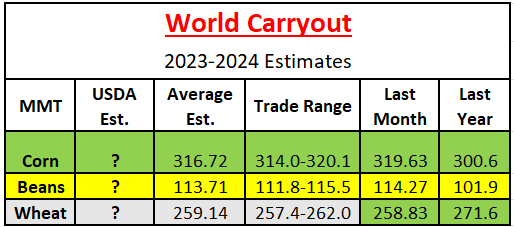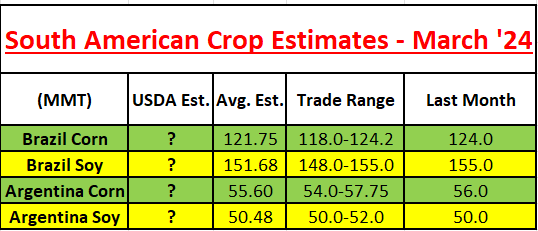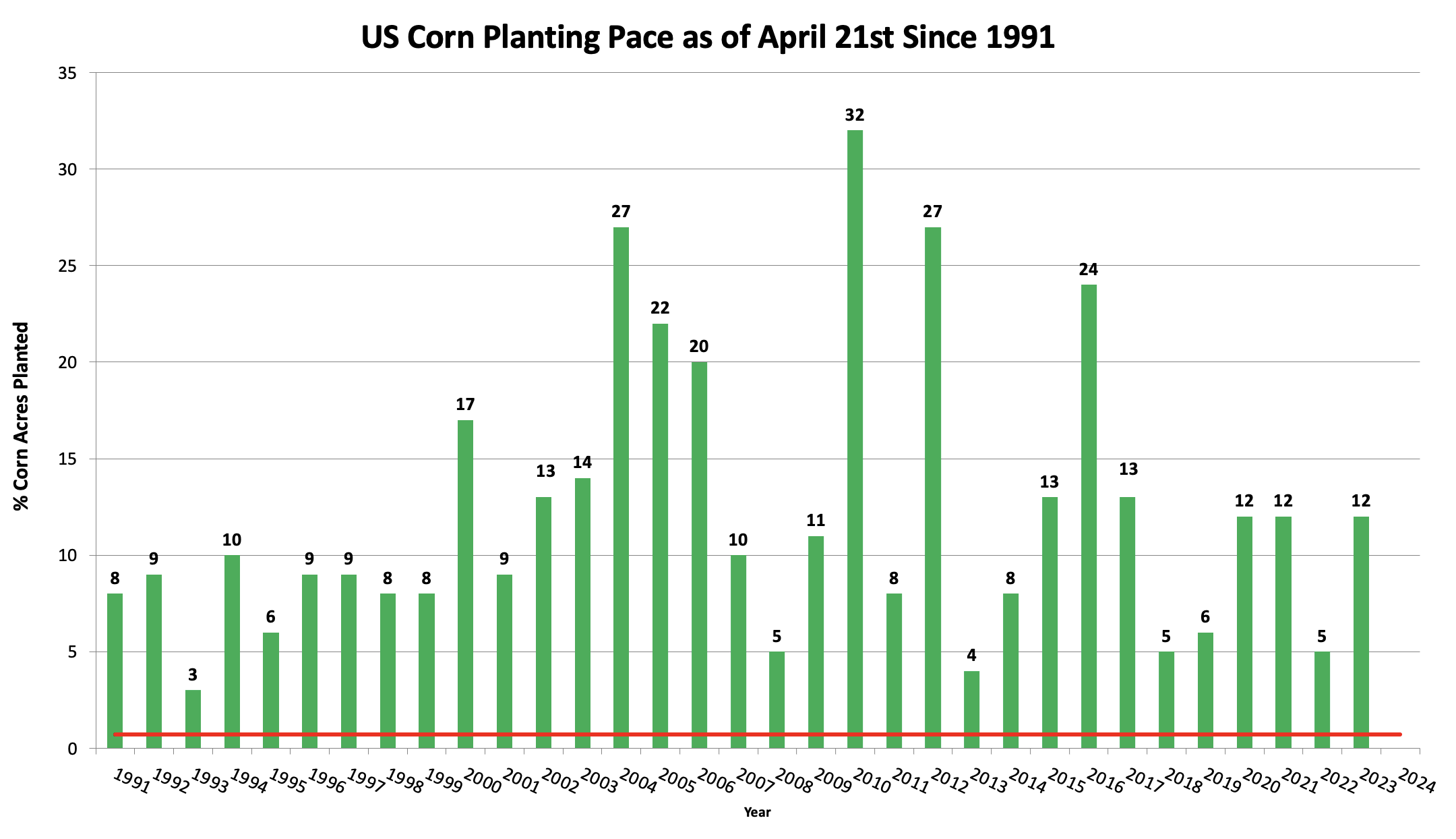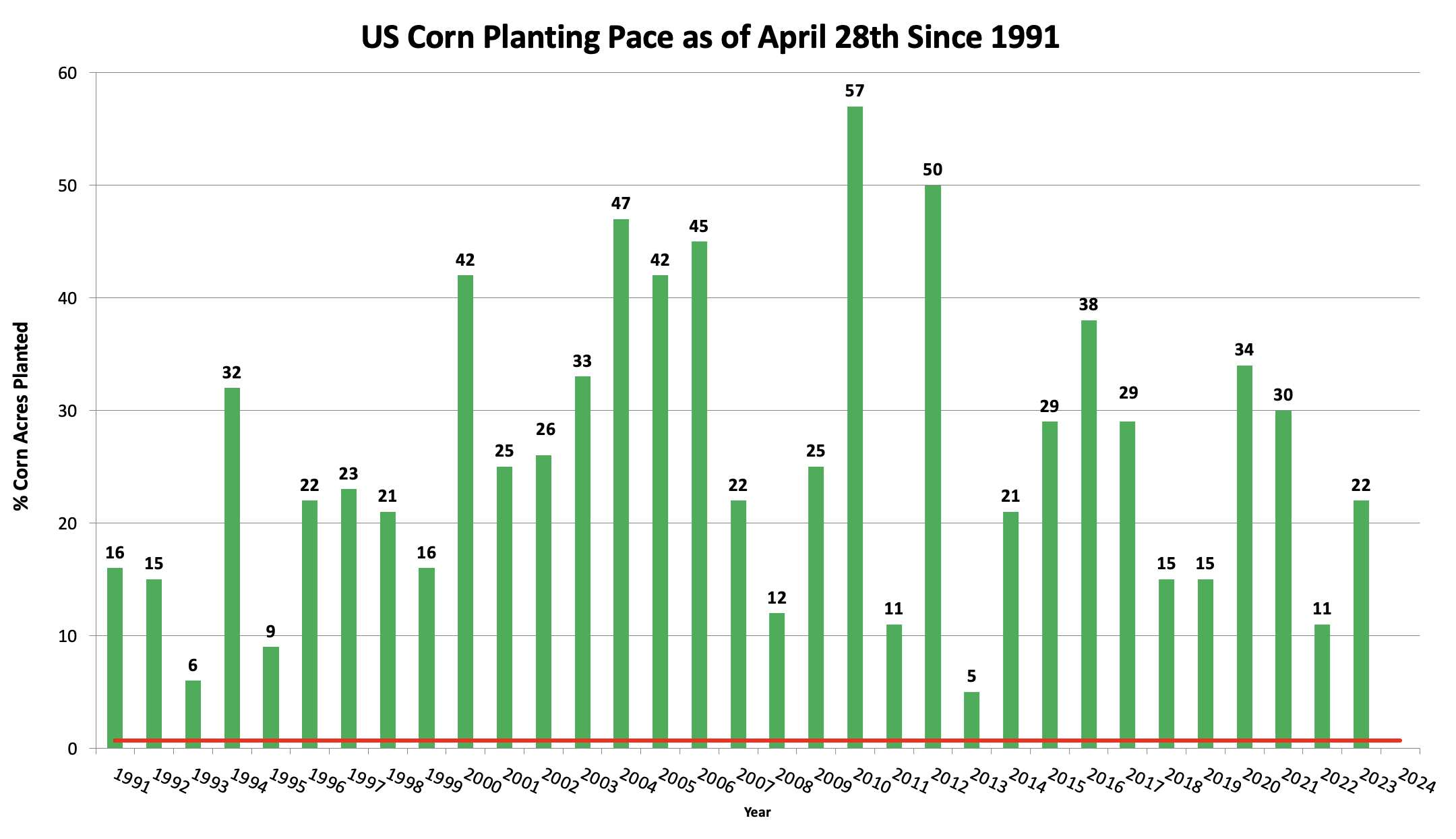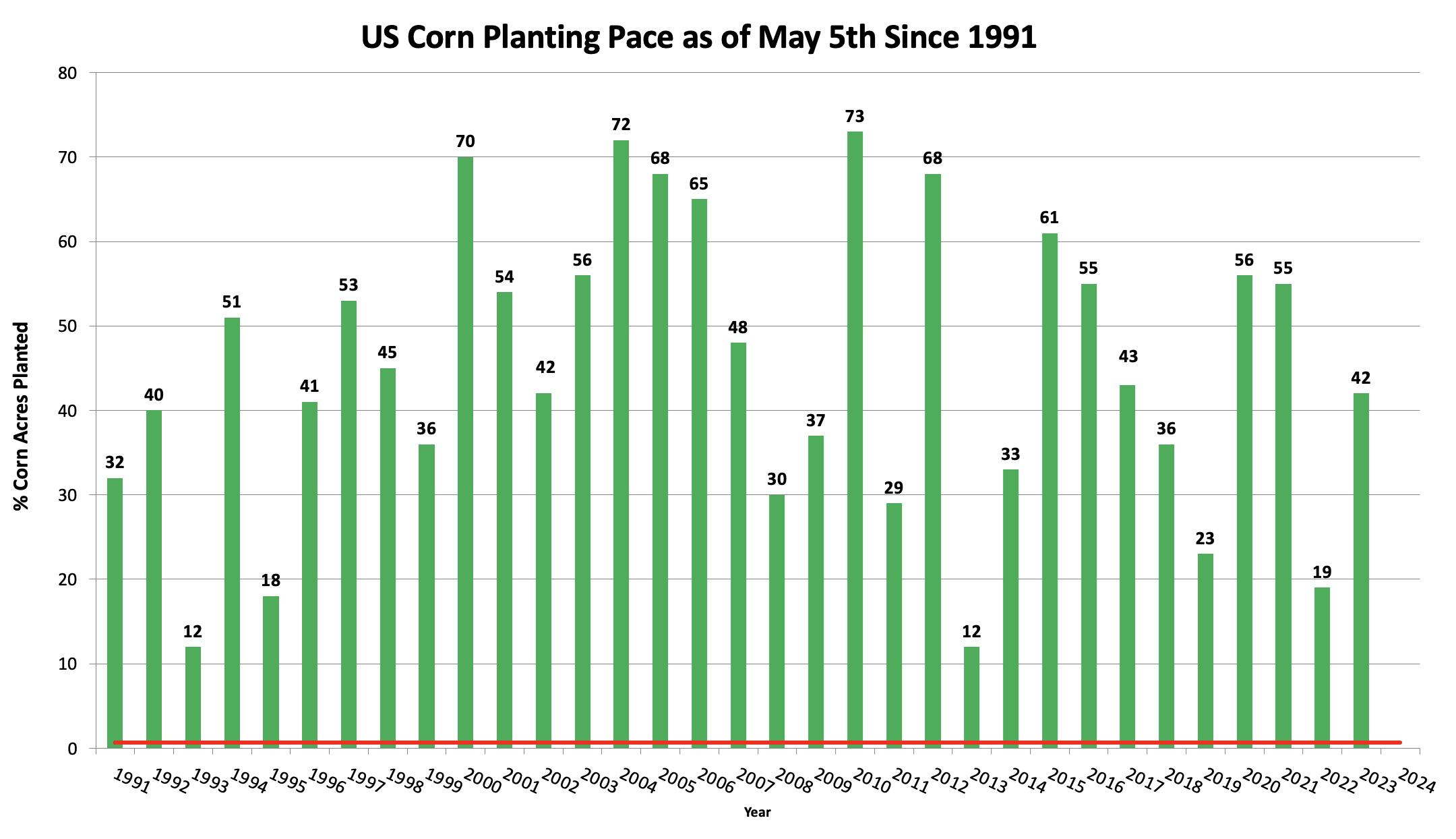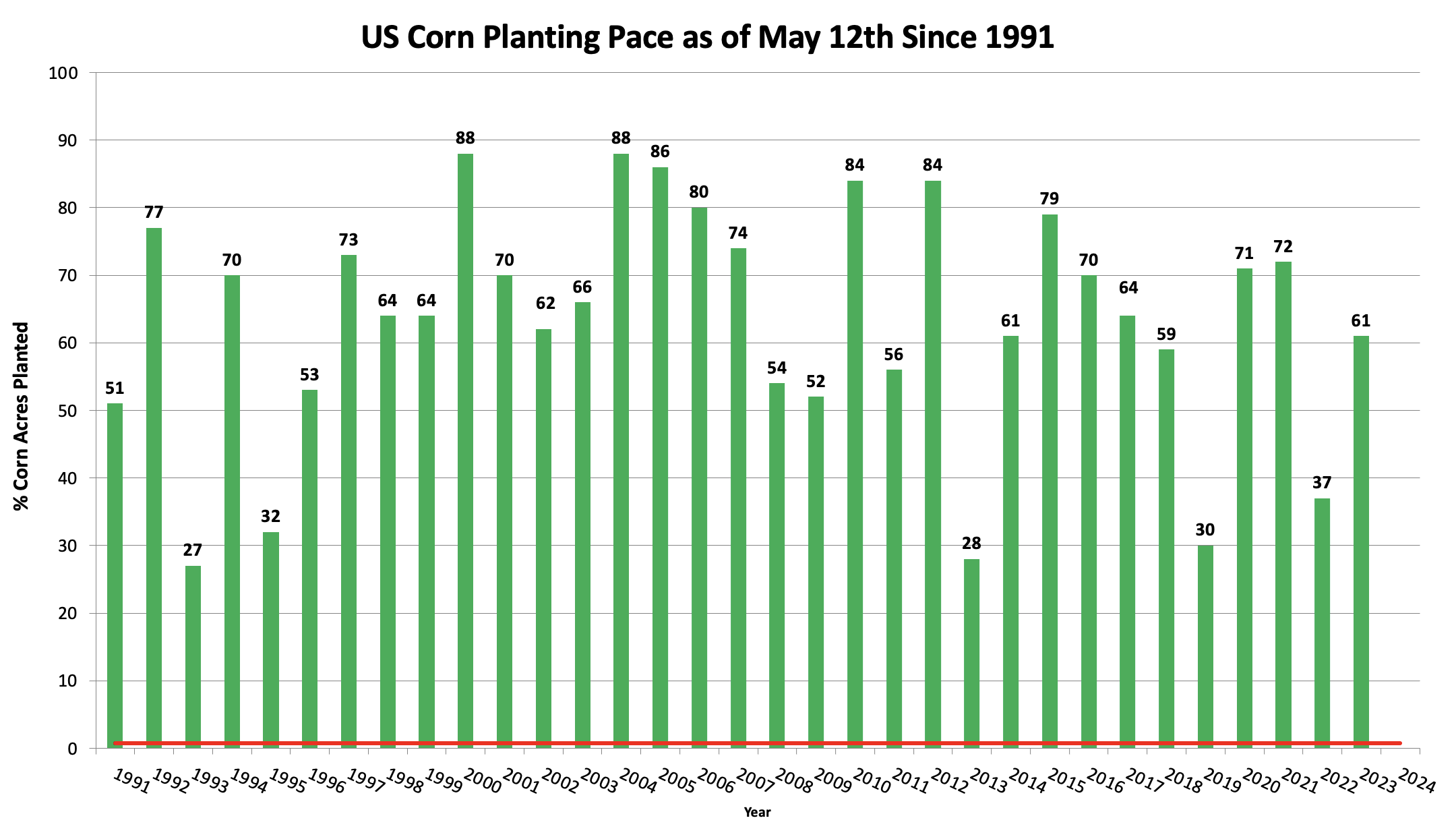Grains closed lower as planting nears, and weakness was seen in the energies. For the day, corn closed 4 to 5 cents lower, soybeans dropped 6 to 7 cents, and wheat lost 8 to 10 cents. In the outside markets, crude oil dropped $1.09, gold rallied $16 to another new record high, and the dollar index was steady. The Dow Jones index lost 9 points.
The USDA will be updating the April Supply & Demand report on Thursday April 11th. They will incorporate the March 1 stocks numbers in the report, but the acreage numbers will wait until the May report. Trade estimates are shown below.
Below are the trade estimates for South American crops. While the trade is looking for lower estimates for both Argentina and Brazilian corn and Brazilan soybeans, the Argy bean crop is expected to increase. Well respected crop scout Dr. Cordonnier is reportedly 15 mmt lower than the USDA corn estimates, and 9 mmt lower on soybean estimates. That’s 590 mln bushels of corn and 330 mln bushels of soybeans below the USDA estimate. We’ll see Thursday if any of these production surprises show up!
Yesterday the USDA put the US corn planting progress at 3% complete, compared to 3% last year, and 2% on average. Since 1991, the range for April 7th has been 0 to 6%, with 2012 having the fastest pace.
Looking at the extended weather forecasts, it appears that progress won’t advance too fast in the Eastern Corn Belt, but planters will start in portions of Iowa, Minnesota, and Nebraska as early as tomorrow. April 10th is the official corn early plant starting date for a large portion of the Midwest, Weekend temps near 80 degrees will be almost ideal for planting. Some soybeans will get put in ahead of corn, while some clients report both corn and soybean planters will be running at the same time.
With planting season just getting started, we thought it would be good to look at some historical corn planting progress by day for the US. Just because planting is record fast early doesn’t guarantee a record yield, or if planting is record slow on a certain date doesn’t guarantee a crop failure. 2012 was a year where planting was record fast, but we all know what happened in that year.— DROUGHT. 2019 was a year with a wet start and slow progress, but in the end, the final yield was only 2.5% below trend. For comparison sakes, 2023 was also 2% below the long term trend, but ended up being a record yield of 177.3 bpa.
Here is a look at next week’s planting progress for the week ending April 14th. It’s safe to say that US corn progress should be 8% or less on Sunday. With more rains in the forecast in the Eastern Corn Belt, planting will be on hold in Illinois and Indiana.
Here is the historical planting progress for April 14th. The 5 year average planting progress is 4.4%.
The top 5 fastest years were:
2012 at 16% complete
2004 at 12% complete
2005 at 11% complete
2010 at 9% complete
2016 at 9% complete
Here is the historical planting progress for April 21st. The 5 year average planting progress is 9.4%.
The top 5 fastest years were:
2010 at 32% complete
2012 at 27% complete
2004 at 27% complete
2016 at 24% complete
2005 at 22% complete
Here is the historical planting progress for April 28th. The 5 year average planting progress is 22.4%.
The top 5 fastest years were:
2010 at 57% complete
2012 at 50% complete
2004 at 47% complete
2006 at 45% complete
2005 at 42% complete
The top 5 slowest years were:
2013 at 5% complete
1993 at 6% complete
1995 at 9% complete
2022 at 11% complete
2011 at 11% complete
Here is the historical planting progress for May 5th. The 5 year average planting progress is 39%.
The top 5 fastest years were:
2010 at 73% complete
2004 at 72% complete
2000 at 70% complete
2012 at 68% complete
2005 at 68% complete
The top 5 slowest years were:
2013 at 12% complete
1993 at 12% complete
1995 at 18% complete
2022 at 19% complete
Here is the historical planting progress for May 12th. The 5 year average planting progress is 54%.
The top 5 fastest years were:
2004 at 88% complete
2000 at 88% complete
2005 at 86% complete
2010 at 84% complete
2012 at 84% complete
2004 finished the year 12% above trend, while 2005 was 2% above, and 2000 at 1% above trend. 2010 hit 99% of trend, while 2012 was a whopping 22% BELOW TREND. Planting in the dust doesn’t always work out!
The top 5 slowest years were:
1993 at 27% complete
2013 at 28% complete
2019 at 30% complete
1995 at 32% complete
2022 at 37% complete
One of the interesting items that we noticed on planting pace is the HUGE difference between the 5 yr average and the 33 yr average for planting pace. Recall that both 2019 and 2022 had wet springs and saw record slow planting, which was partially responsible for the below trend yield both of those years. The USDA reports current year planting compared to the most recent 5 years (2019 to 2023). With record slow plantings in 2 of the 5 years, we are seeing a 8% to 9% difference in the 5 year pace vs the 33 year pace. Don’t be surprised if plantings this year exceed the 5 year pace due to those two wet years. The true indicator will be the long term average pace since 1991. We will have the soybean charts in another commentary this week. As in past years, we will be reporting corn and soybean planting pace each week now until June.
The chart below shows the 33 year average pace in green vs the 5 year average pace in red. The largest discrepancy is during the May timeframe, which are pulled down by the slow progress in 2019 and 2022.
That’s all for today, see you here tomorrow.
This material should be construed as market commentary, merely observing economic, political and/or market conditions, and not intended to refer to any particular trading strategy, promotional element or quality of service provided by AgriSource Inc. Information contained herein was obtained from sources believed to be reliable, but is not guaranteed as to its accuracy. These materials represent the opinions and viewpoints of the author, and do not necessarily reflect the viewpoints and trading strategies employed by AgriSource, Inc.
AgriSource, Inc. is not responsible for any redistribution of this material by third parties, or any trading decisions taken by persons not intended to view this material. It does not constitute an individualized recommendation, or take into account the particular trading objectives, financial situations, or needs of individual customers. Contact AgriSource, Inc. designated personnel for specific trading advice to meet your trading preferences or goals.
